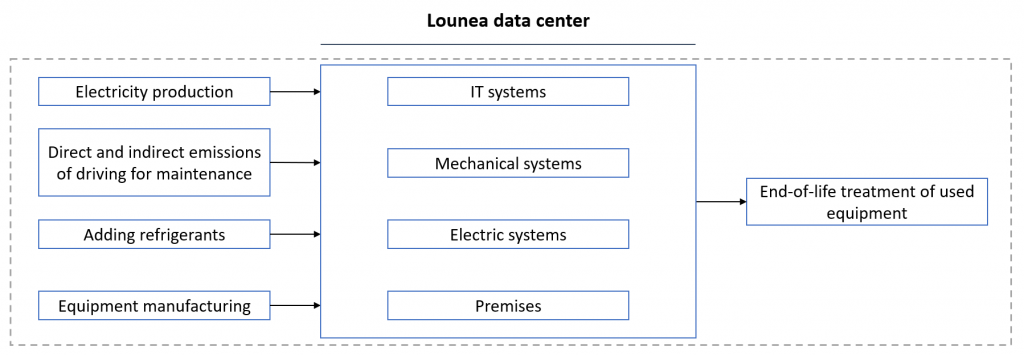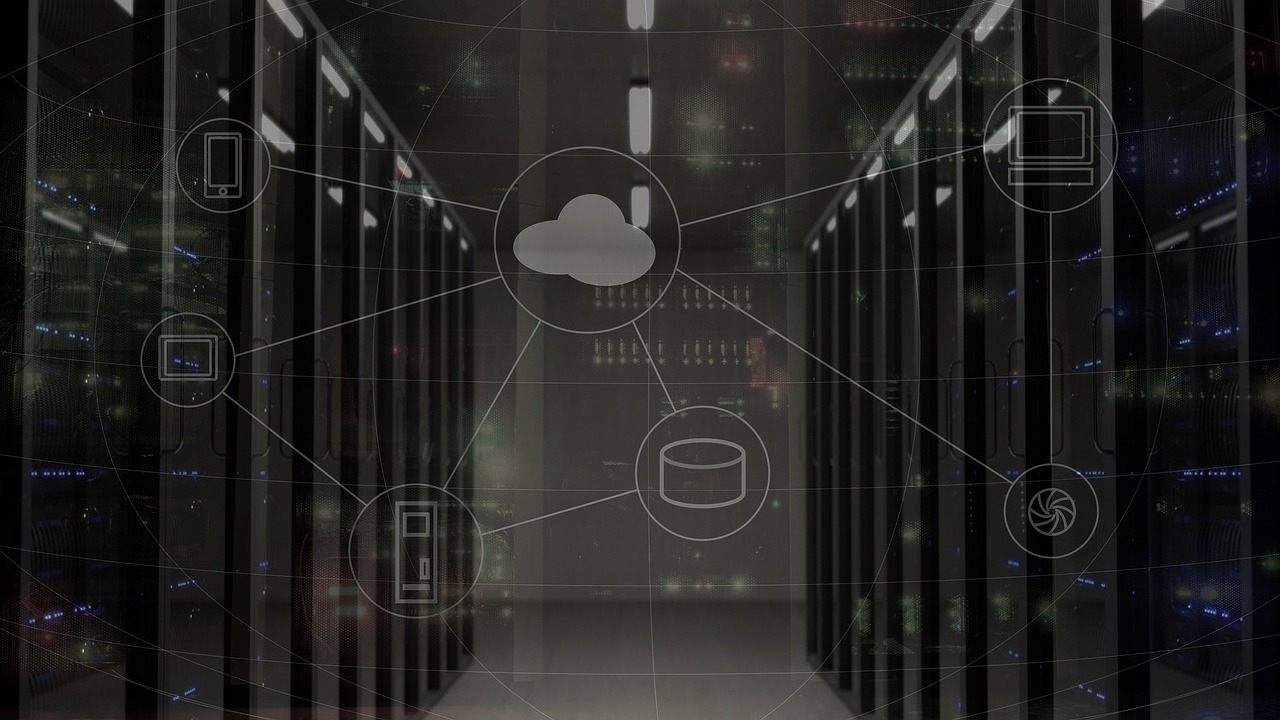The carbon footprint of a service might be an unfamiliar concept to many. You may have come across the carbon footprint of a product, for example, on the packaging of items found on supermarket shelves. But how can you calculate the carbon footprint of a service, an intangible asset? In this blog, we explain how we, together with our partner Lounea, determined the climate impact of cloud services offered to businesses by using the product carbon footprint calculation method according to the ISO 14067 standard.
Lounea is a Finnish fibre operator and a comprehensive ICT infrastructure provider for businesses, building seamless digital everyday life with over 130 years of experience. In addition to local service, Lounea’s values are complemented by a responsibility vision where digital services create a better future for people and the environment.
Lounea has set ambitious climate goals to achieve carbon neutrality in its operations and a 50% reduction in its own emissions as required by the SBTi commitment made in 2023:
- The company transitioned to using 100% renewable electricity in 2018, and premises have been equipped with solar energy solutions.
- In 2023, carbon neutral district heating was adopted.
- The company’s installation vehicles have switched to renewable fuels.
- In the supply chain, Lounea strives to favor partners committed to responsible business practices.
- Circular economy thinking is being integrated into the business, with efforts to extend the lifecycle of devices.
- Remaining emissions from own operations will be offset from 2023 onwards. In the future, this will also apply to emissions from the value chain.
The SBTi commitment is reflected concretely in Lounea’s efforts to understand its own climate impacts. The motivation to calculate the carbon footprint of cloud services arose from the desire to offer carbon neutral digital services. Additionally, Lounea has calculated its organization’s carbon footprint for 2018-2021 for scope 1 and 2 emissions. Since 2022, scope 3 emissions have also been broadly included in the calculations.
UseLess has been involved in calculating the carbon footprint of cloud services and also the organization’s carbon footprint for 2022. The calculation project for the organization’s 2023 carbon footprint was completed in early spring 2024.
What is a carbon footprint of a service?
The carbon footprint of a service, like that of a product, reflects the magnitude of the climate impacts generated throughout the entire lifecycle of the service. The impact assessment takes into account all the activities required to deliver the service. These can be e.g., the service provider’s facilities, equipment, and vehicles, starting from the procurement of raw materials to the disposal of physical components.
Thus, the carbon footprint of a service indicates how much greenhouse gas emissions are produced to provide the service. The calculation also considers the emissions generated before and after the delivery of the service. For example, in the case of equipment, the emissions from manufacturing occur to enable the use of the device. Similarly, emissions generated during the disposal phase arise because the equipment was put into use in the first place. Hence, it is essential to consider these emission sources in the calculation.
In calculating the carbon footprint of a service, a functional unit must be selected. This enables the comparison of the carbon footprints of different solutions. The functional unit can be as simple as carbon dioxide equivalent emissions (e.g., kgCO2e) per delivered service. However, a carbon footprint comparison claim cannot be made solely based on the same functional unit. Instead, it requires that the calculation boundaries and any assumptions made are comparable.
Calculating the carbon footprint of a service
When calculating the carbon footprint of a service, first, the various activities making up the service need to be defined. This includes identifying e.g., the equipment and infrastructure required to enable the service. This definition is known as setting the system boundary. After establishing the system boundary, the carbon footprints of each activity are calculated and then summed to create an overall picture of the emissions. Activity-specific calculations allow for a more detailed understanding of the emissions, making it possible to direct funds allocated for emission reduction measures to where they will have the most impact.

In calculating the carbon footprint of Lounea’s cloud services, the emissions from the company’s premises, energy usage, refrigerants, vehicles, and the lifecycle emissions of various system equipment were taken into account. As a result of the calculations, Lounea gained an understanding of
- the total carbon footprint of the cloud services they offer,
- the contribution of individual components of the service to the overall carbon footprint, and
- the areas where truly impactful emission reduction measures can be implemented.
Since carbon footprint calculations typically require making some assumptions, it is suggested to perform a sensitivity analysis on the results. This approach was also applied in Lounea’s project to understand the impact of key assumptions on the carbon footprint.
Why did Lounea choose UseLess Company as their partner for carbon footprint assessment?
Lounea decided to seek external assistance for calculating the carbon footprint of their organization at the group level when it became the time to measure the emissions of their value chain. According to Petri Syväjärvi, CEO of Lounea Yritysratkaisut Oy, the reason Lounea chose UseLess as their partner for the entire group’s carbon footprint calculation was due to UseLess’ excellent references. The well-executed project has so far led to continued collaboration with Lounea Yritysratkaisut, involving both the carbon footprint calculation of their cloud services and the organization’s 2023 carbon footprint calculation.
“Lounea Yritysratkaisut Oy operates nationwide as a comprehensive supplier of ICT infrastructure solutions for businesses and public administration. In the ICT procurement of customer organizations, environmental impacts will become a key factor influencing procurement decisions. This role will quickly become more prominent in the coming years as medium-sized and larger companies take the lead in producing legally mandated sustainability reports. We want to be the most versatile and competitive option for our customers in ICT infrastructure services. In the future, this will also mean that we need to accurately and credibly verify how and where ICT environment emissions are generated. For this reason, I believe we made the right decision in partnering with UseLess to develop the sustainability elements of our service offering.”
— Petri Syväjärvi, CEO, Lounea Yritysratkaisut Oy
At UseLess, we first aim to help our clients understand the climate impacts of their operations. Then, we support them in planning and implementing emission reduction measures. The efforts of every player in the value chain to reduce emissions are crucial as the climate crisis is a systemic problem that requires actions from all. We are very pleased to continue as Lounea’s partner and support them in achieving their climate goals.
